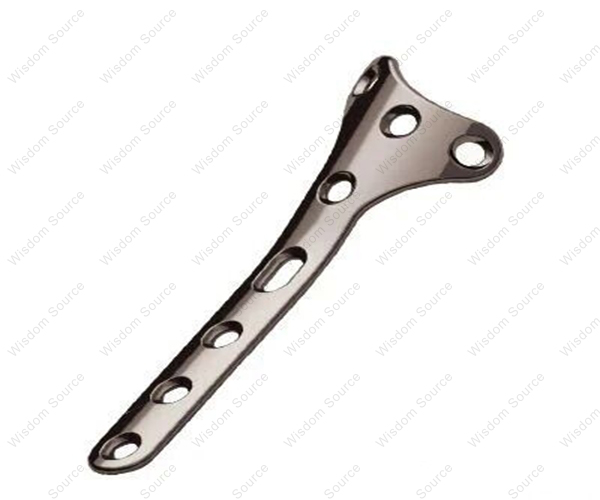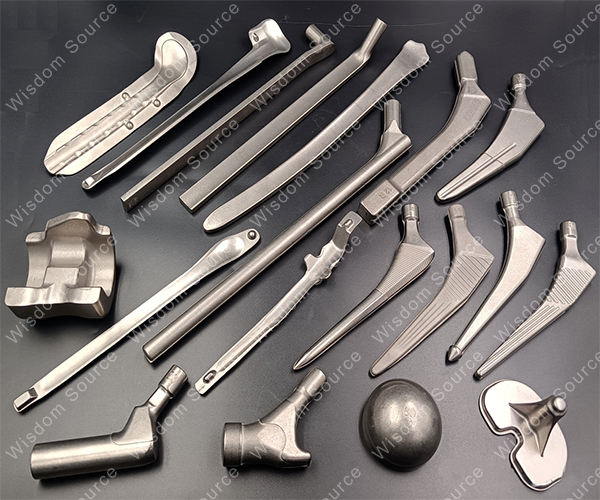Miller And Titanium alloy: Taking The Body As Evidence, Creating An Orthopedic Legend
Miller And Titanium alloy: Taking The Body As Evidence, Creating An Orthopedic Legend
In the long history of the development of medical devices, there are always some figures who have promoted the progress of the industry in unique ways. Dane A. Miller (Dane A. Miller), the co-founder and long-term CEO of Biomet, is such a legend. He used a piece of titanium alloy implanted in his arm to write an extraordinary chapter in the field of orthopedic instruments, making titanium alloy shine with a unique light in medical applications.
1. Ordinary Starting Point, Material Science Chasing Dreams
Miller was born in Springfield, Ohio. He didn't grow up in a wealthy environment, but he has been interested in engineering since he was a child. With his own efforts, he received a bachelor's degree in mechanical engineering from Ohio State University, and then a master's degree and a doctorate degree from the University of Cincinnati. His research interests focus on biomedical materials, especially the bio-compatibility of titanium alloys, tantalum metals and other implant materials.
After World War II, the orthopedic equipment industry has just started, and the safety of materials and the long-term integration of human bones have become common problems faced by the medical and engineering circles. Miller shuttled between academia and industry, working successively at Zimmer and Cutter Laboratories.This experience allowed him to witness the many limitations of implants at that time with his own eyes, and it also ignited the flame of entrepreneurship in his heart.
2. Founded Bangmei And Started A Customized Journey
In 1977, Miller and Niles Noblitt (Niles Noblitt), Jerry Ferguson (Jerry Ferguson) and Ray Harrov (M. Ray Harroff) co-founded Bonmei in Warsaw, Indiana.In the first year of the company's establishment, the revenue was only US 117,000, and the office was also located in a converted barn.
Unlike the “batch manufacturing” model adopted by major manufacturers of the same era, Bangmei has found another way, emphasizing tailor-made implants for surgeons and rapid product iteration. This model of “co-creation with the surgeon” allowed Bangmei to quickly accumulate a good reputation in the early days. In 1978, Miller served as CEO and served until 2006.In these three decades, he has developed Bangfa into an industry giant with revenue of more than 2 billion US dollars and more than 4,000 employees. Representative products launched by Bangmei, such as the AGC knee joint system, have become the industry standard.

More importantly, Miller has shaped a unique “can-do family” culture for Bangmei. In this cultural atmosphere, engineers and employees are encouraged to take risks and quickly try and make mistakes; the opinions of doctors are regarded as the core elements of product evolution. This culture not only has the temperament of a startup company, but also contains a strong mid-Western spirit of hard work.
3. “Titanium Alloy Experiment”, Body For Trust
Despite the continuous progress of Bangmei's technology, surgeons still have doubts about the long-term safety of titanium alloy implants.In order to dispel the doctors' concerns, Miller made a bold and direct decision-to implant a piece of titanium in his arm.
This titanium strip remained in Miller's body for ten years. During this period, he underwent regular examinations and showed X-rays to doctors at academic conferences.Some doctors think he is “crazy”, and some people admire his courage. But in any case, this story quickly spread and became Bangmei's most convincing live advertisement.Miller himself humorously joked: “When it came out, it was exactly the same as when it went in.” This obsession of ”trying the law by yourself" has become a key factor for Bangmei to win the trust of doctors.
4. Family And Individual, Multi-Faceted Miller
Miller's career story is also interspersed with many personal details. The patient of the first total hip replacement operation performed by Bangmei was his grandmother Grace Shumaker. For him, this is not only a clinical verification, but also a practical action to improve the quality of life for family relatives.
Miller and his wife, Mary Louise Miller, established the Dane and Mary Louise Miller Foundation to fund scholarships, community projects, and environmental causes. In addition to his love of engineering, Miller also actively invests in racing cars and yachts, extending his innovative spirit to his hobbies. He is not only a successful entrepreneur, but also a persistent “engineering madman”.

5. Power Game And Industry Heritage
In 2006, Miller was forced to step down due to conflicts with the board of directors.But he did not withdraw from the historical stage.In 2007, he teamed up with a private equity fund to acquire Bangmei for USD$111.4 billion, putting the company back under the control of himself and his team.
In 2015, Zimmer acquired Bangmei and established what is now Zimmer Biomet. In February of the same year, Miller died at the Cleveland Clinic at the age of 69.Colleagues called him a “true pioneer” in their obituaries.Purdue University established the position of dean of the School of Biomedical Engineering named after him in 2016; PBS Michiana also filmed the documentary "Legends of Michiana: Dane Miller" for him.
6. Revelation And Inheritance
What Miller left behind is not only the global orthopedic equipment giant Bangmei, but also a spirit of perfect combination of trust and innovation. For doctors, he used physical experiments in exchange for trust in titanium alloy materials; for patients, from his grandmother to millions of patients with joint disease around the world, his research has effectively changed their quality of life; for the industry, he proved that on the road of combining materials science and clinical practice, someone must dare to take risks.
As a colleague said: "Miller is not just a leader, he is an engineer, an innovator, and even an experimenter.He convinced the entire industry that titanium alloy is safe.” In the world of medical devices, data and laboratory reports often appear cold and abstract.But Miller used the simplest and most persistent method-rolling up his sleeves and exposing his arms-to make science and trust concrete and perceptible. A period of titanium alloy and ten years of “human experiments” have not only achieved the rise of an enterprise, but also changed the lives of countless patients.
